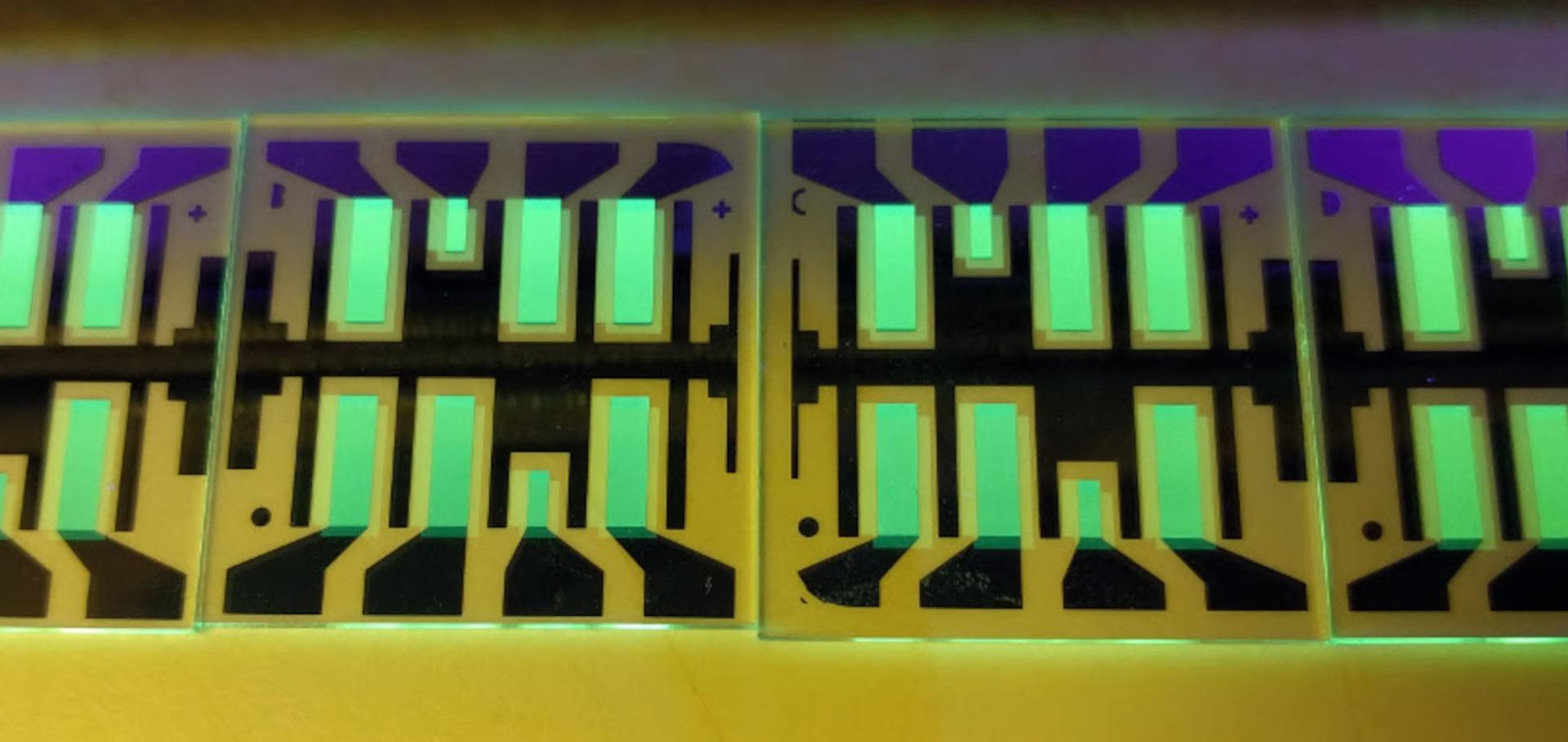Light Incoupling & Optical Optimisation of Organic Solar Cells
Optica Publishing Group (2010) pwd5
Verantwortung der Wissenschaftler gegenüber der Gesellschaft
Chapter in Gerechtigkeit und Verantwortung in der Klima- und Energiepolitik, MV-Verlag (2010)
Efficient semitransparent small-molecule organic solar cells
Applied Physics Letters 95:21 (2009)
Abstract:
We present semitransparent small-molecule organic solar cells (OSC) deposited by thermal evaporation onto indium tin oxide (ITO)-coated glass substrates. The devices employ ITO-free ultrathin metal layers as top electrodes, containing 1 nm metal surfactant interlayer for improved morphology. Using a bulk heterojunction of zinc phthalocyanine and C60, sandwiched in between doped dedicated transport layers for efficient charge carrier extraction, power conversion efficiencies comparable to conventional OSC with an intransparent thick back electrode and similar device layout are achieved: the semitransparent OSC yield power conversion efficiencies well above 2% with external quantum efficiencies above 30%-40%. Organic light incoupling layers improve the transmission to up to 50% in the visible part of the optical spectrum. © 2009 American Institute of Physics.Characterization of effective charge carrier mobility in ZnPc/C60 solar cells after ageing
Physica Status Solidi (C) Current Topics in Solid State Physics 6:12 (2009) 2864-2866
Abstract:
We have investigated the ageing of ZnPc/C60 solar cells in terms of changes of the charge carrier mobility and potential barrier height. The initial fast degradation of device performance within several hours was followed by a much slower one. The mobility decreases during degradation by about 30 to 50 %. Moreover, an increase of the effective barrier height at ZnPC/C60 interface from ∼0.55 eV up to ∼0.65 eV was observed. Meanwhile thermal activation energy values of the electrical conductivity grew from about 0.28 eV to about 0.34 eV after ageing. © 2009 Wiley-VCH Verlag GmbH & Co. KGaA.Transparent conductive layers for organic solar cells - Simulation and experiment
Proceedings of SPIE - The International Society for Optical Engineering 7416 (2009)


